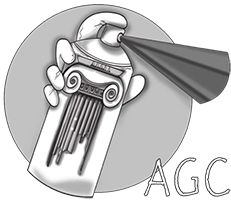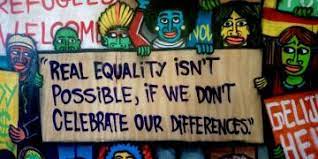GRAFFITI ΙΝ ΤΗΕ LINGUISTIC LANDSCAPE – Anastasios Kountouris

Tribes, targets and methods – Charalampos Magoulas
30 September 2022
1st Terra (in) Cognita International Conference Dialogues between Greek Culture and Modern American Art
7 November 2022GRAFFITI ΙΝ ΤΗΕ LINGUISTIC LANDSCAPE

Graffiti is one of the most dynamic global phenomena of recent decades. From being considered a relatively marginalized and illegal act it has changed into a complex phenomenon of urban culture. Although there is a dispute in public opinion as to whether it is a form of art, an expression of protest or common vandalism, graffiti are undeniably on the rise and impress with their inventiveness and polysemy. In fact, the growing scientific - and not only - interest in graffiti has contributed to their de-villainization.
Graffiti is now studied from many different scientific perspectives. One of the most important is that of Linguistics. After all, the very nature of graffiti is connected to language, while its name comes from the Latin "graffiare" (which means to draw), which is etymologically connected to the Greek "grafo". More specifically, the phenomenon of graffiti has in recent years been a special object of research and study in Linguistics in the light of the so-called "linguistic landscape". One of the first and most popular definitions of the term is that of Landry and Bourhis, according to which "The language of public road signs, advertising billboards, street names, place names, commercial shop signs, and public signs on government buildings combine to form the linguistic landscape of a given territory, region or urban agglomeration.". This definition will be supplemented, with the decisive assistance of Scollon & Scollon, who emphasize the importance of space and the placement of the language to highlight the special connections between them. The linguistic landscape is considered a separate textual genre, which is part of the wider discourse of the urban landscape (urban discourse).
The systematic examination of graffiti in the context of the linguistic landscape is particularly developed with the work of Pennycook, who highlighted the social functions of graffiti, which often serve as a reaction to the dominant discourse, express the voice of minority or marginalized groups and, finally, they capture social and cultural identities. Therefore, the graffiti phenomenon is connected to distinct social practices, is a means of communication and is inextricably linked to the public space in which it is registered, carrying particular symbolisms related to the specific geographical point, the time of creation and the respective socio-cultural context.
The linguistic landscape has a fluid form, as the public space is constantly being constructed, deconstructed and reconstructed. Examining graffiti in this context requires a broader semiotic approach to understand the symbolic connections, the cultural background of human action and the social processes that take place. Approaching graffiti as part of the linguistic and wider semiotic landscape can be the key to a broader understanding of urban culture, changing social conditions, reforming identities and cultural ferments of the epoch in which we live.
Anastasios Kountouris




